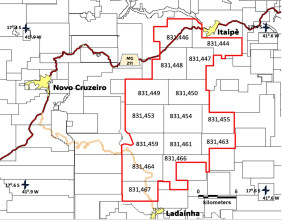Highlights
- Fixed exchange rate system linking global currencies to the U.S. dollar and gold.
- Established by the Bretton Woods Agreement, ensuring international monetary stability.
- Abandoned by the U.S. in August 1971, ending the gold-dollar convertibility.
The Gold Exchange Standard was a fixed exchange rate system that played a pivotal role in shaping the global monetary landscape during the 20th century. It was established as part of the Bretton Woods Agreement, which aimed to create a stable international financial environment after the economic turmoil of the Great Depression and World War II. Under this system, the U.S. dollar was pegged to gold, and other countries pegged their currencies to the U.S. dollar, ensuring a fixed exchange rate regime that promoted international trade and economic stability.
The Bretton Woods Agreement, signed in 1944, set the framework for the Gold Exchange Standard. It positioned the U.S. dollar as the world’s reserve currency due to the United States’ vast gold reserves at the time. Specifically, the U.S. committed to redeeming dollars for gold at a fixed rate of $35 per ounce, giving other countries confidence in holding dollars as part of their foreign exchange reserves. This arrangement provided a stable basis for international trade and investment by minimizing currency fluctuations.
By pegging global currencies to the U.S. dollar, the Gold Exchange Standard facilitated predictable exchange rates, which were crucial for economic growth and international commerce. Countries maintained their currency values by intervening in foreign exchange markets, buying or selling U.S. dollars to stabilize their own currencies. This system also imposed monetary discipline, as countries were required to maintain adequate dollar reserves to uphold the fixed exchange rates.
However, the Gold Exchange Standard began to face challenges in the 1960s. The growing U.S. trade deficit, increasing foreign liabilities, and rising domestic inflation put pressure on the dollar's value. As global demand for gold surged, doubts about the U.S. government’s ability to maintain the gold-dollar parity intensified. In response to mounting financial strain, President Richard Nixon announced the suspension of gold convertibility on August 15, 1971, effectively ending the Gold Exchange Standard. This historic decision, known as the "Nixon Shock," marked the transition to a fiat currency system, where the value of money is not backed by physical commodities but by government decree.
Conclusion
The Gold Exchange Standard established a framework for international monetary stability by linking currencies to the U.S. dollar and gold. It played a crucial role in post-World War II economic growth but eventually collapsed due to imbalances and mounting pressures on the U.S. dollar. The decision to abandon the gold standard in 1971 marked a significant shift in global finance, leading to the floating exchange rate system that governs international currency markets today.



